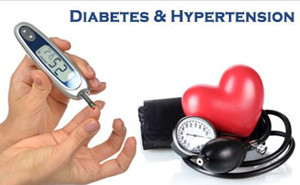Drugs-for-hypertension-anti-hypertensive
Journal of Hypertension:
Most patients with hypertension
require more than one drug to attain recommended blood pressure (BP) targets.
Initiating therapy with two agents is recommended for patients at high risk of
a cardiovascular event.
Fixed drug combinations are
increasingly used in antihypertensive therapy, so it is necessary to...
Clinical trials in hypertension
have repeatedly shown that adequate blood pressure (BP) control is important
for the prevention of cardiovascular morbidity and mortality. However, most
patients do not achieve target BP levels, and the majority of them require
combination therapy with two or more drugs in order to obtain an adequate BP
redu...
Hypertension is one of the leading
public health challenges worldwide. It is common in both developed and
developing countries.
Essential hypertension is believed
to be a result of complex interaction of genetic and environmental factors.
Increased peripheral resistance is responsible for most of the cases of
essential hypertension....
Hypertension is considered a major
health problem around the world. It’s associated with increasing risk of
mortality due to its complication which has a great impact on patient’s life
quality.
Chronic uncontrolled hypertension
is a significant risk factor for cardiovascular mortality and morbidity,
strokes, heart failure, and renal fai...
The American Diabetes Association
(ADA) “Standards of Medical Care in Diabetes” includes the ADA’s current
clinical practice recommendations and is intended to provide the components of
diabetes care, general treatment goals and guidelines, and tools to evaluate
quality of care.
Atherosclerotic cardiovascular
disease (ASCVD)—defined as...
The Lancet:
TAKE-HOME MESSAGE
It is well-established that blood pressure control is an
important strategy in reducing cardiovascular events among people with
diabetes.
This data analysis that included studies comprised of over
145,000 participants finds that a reduction of 5 mm Hg in systolic blood
pressure was associated with an...
High
blood pressure is the leading cause of mortality and cardiovascular disease
globally, and most of the disease burden occurs in low- and middle-income
countries. Recent guidelines recommend lower blood pressure targets
among high-risk patients, increasing the need for more effective treatment
strategies.Treatment with a pill combining low...
This clinical practice guideline
for the evaluation and diagnosis of chest pain provides recommendations and
algorithms for clinicians to assess and diagnose chest pain in adult patients.The “2021
AHA/ACC/ASE/CHEST/SAEM/SCCT/SCMR Guideline for the Evaluation and Diagnosis of
Chest Pain” provides recommendations based on contemporary evidence on...
Physical Examination
Causes of chest pain are numerous; the initial evaluation
should focus on those that are life-threatening, such as ACS, PE, aortic
dissection, and esophageal rupture, to facilitate rapid implementation of
appropriate treatment. Specific clues can be helpful. Chest tenderness on
palpation or pain with inspiration markedly...










